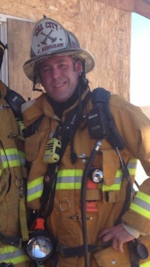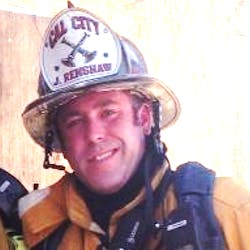Mayday, mayday, mayday! No incident commander or firefighter wants to hear that phrase while operating on an emergency scene.
Of course, the circumstances for any mayday situation are all different, but all maydays have one important factor in common: A firefighter(s) is in trouble and might need help immediately.
Can fire chiefs who are faced with a severe administrative issue or who believe that their career is in jeopardy call a management mayday? Not only can they, but they should. This action assists them in resetting within their position and, hopefully, in getting them and their agency back on the right track.
Two of the most crucial pieces of this action are a fire chief’s ability to identify the factors and/or the reasons for the management mayday and the ability to identify the information that’s needed to relay across the proverbial radio when calling for help.
Reason for the mayday
When firefighters call a mayday, a single event or series of events are occurring that prompts them to put out the call that assistance is required. In regard to a need for a fire chief to call a management mayday, one must recognize that the position of fire chief is a complex one. The position and all that it entails vary from department to department.
Not every issue or problem might exist in each agency, but below are some that all fire chiefs should be aware of, which, if not addressed, can lead to failure—and the only way to deal with any of them is to call for help.
- No matter the makeup of an agency (volunteer, career, combination), the loss of trust or faith in a fire chief by subordinates quickly leads to all of the chief’s decisions being questioned and to the department’s policies not being adhered to or enforced. The longer that it takes for you to get a handle on this, the more that the department will start to spiral out of your control, until it reaches a point where it is lost.
- When your most driven, energetic and passionate employees become quiet, a fire chief likely faces a workforce that has low morale. A fire chief must realize that this directly affects the quality of work that the department’s people execute. This might not only affect operations on the fireground but also might be exhibited during public relations events and interaction within the department’s community.
- For a fire chief and the department to succeed, the relationship between a chief, the municipality’s elected officials and the municipal manager must be strong. The bonds must be built on mutual respect and understanding, because, as the department head, the fire chief is looked to as the person for making critical decisions and to be a leader during times of peril and elevated stress. When the relationship between the chief, the municipality’s elected officials and the municipal manager becomes strained/almost nonexistent, your position will be in question. So will your status within the government’s hierarchy.
- A fire department chief’s biggest cheerleaders are the people who are in the community that you serve and protect. However, when lives are lost or fire damage is significant—resulting from factors that might be out of one’s control—perceptions might outweigh reality even when fire chiefs are at their best operationally. At such a point, fire chiefs must build back the support that can be jeopardized easily because of one incident.
A management LUNAR
When firefighters find themselves in trouble, they push their emergency button on their radio and transmit a series of information to the incident commander. That information is used to formulate a rescue plan. One of the popular acronyms to assist in remembering which information to relay is LUNAR (location, unit, name, assignment/air supply, resources needed). This same acronym, modified accordingly, can assist fire chiefs when they find themselves in a position where they must call a management mayday.
Look at yourself—Identify problems or issues. Some of these already might be known, particularly if your boss(es) informed you of them or if subordinates made official complaints or generated documentation. A good example of this would be a vote of no confidence, which would be accompanied by a list of grievances.
Understand—After identifying the problem(s), do what’s necessary to comprehend how you got to that point and how to move on from it.
Needs—This applies to what you must do to fix or overcome the problem(s).
Assessment—After you implement a fix, see whether it’s working or whether it must be modified. This portion of the management mayday is continuous, and you can’t lose track of it. If you do, you might end up back in the same spot at which you called the mayday.
Reach out—During any portion of your management mayday, never hesitate to contact those who are in your network or in your close circle of trusted peers. Those people likely are able to provide advice as well as their truthful opinions on the matter. It’s very well possible that you won’t like what they have to say, but their observations might be just what you need to hear.
Look for the signs
Unfortunately, when chiefs are handed their gold badge and white helmet, an instructional guide or how-to book isn’t given to them, too. Throughout a fire service career, much experience comes in the form of lessons learned, and that’s more so from mistakes than it is from perfection/when things go right.
Don’t disregard the signs of a potential administrative failure. Don’t hesitate to make the call for help as soon as possible, because that call might be the only way to salvage what you have worked so hard for—your position.

Jared Renshaw
Jared Renshaw has more than 20 years of experience in the fire service. He started his fire service career with the Fairview Volunteer Fire Department in South Fayette Township, PA. Renshaw also served with career departments in South Carolina and California and since 2015 has served as the fire commissioner with the Western Berks Fire Department in Berks County, PA. He holds a bachelor's degree in fire service administration and is designated as a Chief Fire Officer through the Center for Public Safety Excellence (CPSE). Renshaw serves as a Peer Reviewer for the CPSE and as a member of the board of directors for the Pennsylvania Fire and Emergency Services Institute. He is a member of the advisory boards for Firehouse and Firehouse Expo.






